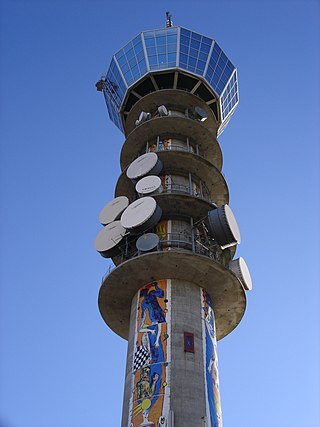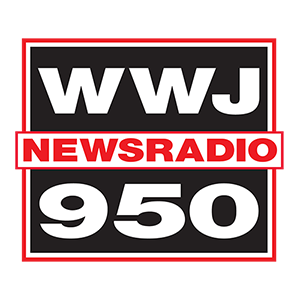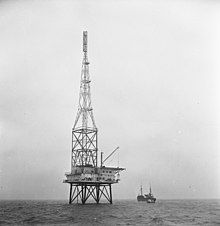
Shortwave radio is radio transmission using radio frequencies in the shortwave bands (SW). There is no official definition of the band range, but it always includes all of the high frequency band (HF), which extends from 3 to 30 MHz ; above the medium frequency band (MF), to the bottom of the VHF band.

In electronics and telecommunications, a radio transmitter or just transmitter is an electronic device which produces radio waves with an antenna with the purpose of signal transmission up to a radio receiver. The transmitter itself generates a radio frequency alternating current, which is applied to the antenna. When excited by this alternating current, the antenna radiates radio waves.

AM broadcasting is radio broadcasting using amplitude modulation (AM) transmissions. It was the first method developed for making audio radio transmissions, and is still used worldwide, primarily for medium wave transmissions, but also on the longwave and shortwave radio bands.

Ultra high frequency (UHF) is the ITU designation for radio frequencies in the range between 300 megahertz (MHz) and 3 gigahertz (GHz), also known as the decimetre band as the wavelengths range from one meter to one tenth of a meter. Radio waves with frequencies above the UHF band fall into the super-high frequency (SHF) or microwave frequency range. Lower frequency signals fall into the VHF or lower bands. UHF radio waves propagate mainly by line of sight; they are blocked by hills and large buildings although the transmission through building walls is strong enough for indoor reception. They are used for television broadcasting, cell phones, satellite communication including GPS, personal radio services including Wi-Fi and Bluetooth, walkie-talkies, cordless phones, satellite phones, and numerous other applications.

Radio broadcasting is the broadcasting of audio (sound), sometimes with related metadata, by radio waves to radio receivers belonging to a public audience. In terrestrial radio broadcasting the radio waves are broadcast by a land-based radio station, while in satellite radio the radio waves are broadcast by a satellite in Earth orbit. To receive the content the listener must have a broadcast radio receiver (radio). Stations are often affiliated with a radio network that provides content in a common radio format, either in broadcast syndication or simulcast, or both. Radio stations broadcast with several different types of modulation: AM radio stations transmit in AM, FM radio stations transmit in FM, which are older analog audio standards, while newer digital radio stations transmit in several digital audio standards: DAB, HD radio, DRM.

Offshore radio is radio broadcasting from ships or fixed maritime structures. Offshore broadcasters are usually unlicensed but transmissions are legal in international waters. This is in contrast to unlicensed broadcasting on land or within a nation's territorial waters, which is usually unlawful.

The General Mobile Radio Service (GMRS) is a land-mobile FM UHF radio service designed for short-range two-way voice communication and authorized under part 95 of the US FCC code. It requires a license in the United States, but some GMRS compatible equipment can be used license-free in Canada. The US GMRS license is issued for a period of 10 years by the FCC. The United States permits use by adult individuals who possess a valid GMRS license, as well as their immediate family members. Immediate relatives of the GMRS system licensee are entitled to communicate among themselves for personal or business purposes, but employees of the licensee who are not family members are not covered by the license. Non-family members must be licensed separately.
Code of Federal Regulations, Title 47, Part 15 is an oft-quoted part of Federal Communications Commission (FCC) rules and regulations regarding unlicensed transmissions. It is a part of Title 47 of the Code of Federal Regulations (CFR), and regulates everything from spurious emissions to unlicensed low-power broadcasting. Nearly every electronics device sold inside the United States radiates unintentional emissions, and must be reviewed to comply with Part 15 before it can be advertised or sold in the US market.

The Marine, &c., Broadcasting (Offences) Act 1967, shortened to Marine Broadcasting Offences Act or Marine Offences Act, became law in the United Kingdom at midnight on Monday 14 August 1967. It was subsequently amended by the Wireless Telegraphy Act 2006 and the Broadcasting Act 1990. Its purpose was to extend the powers of the Wireless Telegraphy Act 1949, beyond the territorial land area and territorial waters of the UK to cover airspace and external bodies of water.
In the United States, the Multi-Use Radio Service (MURS) is a licensed by rule two-way radio service similar to the Citizens band (CB). Established by the U.S. Federal Communications Commission in the fall of 2000, MURS created a radio service allowing for licensed by rule operation in a narrow selection of the VHF band, with a power limit of 2 watts. The FCC formally defines MURS as "a private, two-way, short-distance voice or data communications service for personal or business activities of the general public." MURS stations may not be connected to the public telephone network, may not be used for store and forward operations, and radio repeaters are not permitted.
Pirate radio stations have operated in various countries of Asia, often putting over political or nationalist points of view. Offshore stations have attempted to reach China or overseas Chinese residents. Citizens' Radio is an unlicensed Hong Kong pro-democracy station. In Taiwan, what are known as "underground radio" stations have broadcast both pro- and anti-government opinions. Large numbers of unlicensed stations have functioned in the Philippines, of which 107.9 U-Radio (2006–2013) is among the best known. Finally, Radio First Termer was briefly operated by and for U.S. troops in Vietnam in 1971.
The strict definition of a pirate radio station is a station that operates from sovereign territory without a broadcasting license, or just beyond the territorial waters of a sovereign nation from on board a ship or other marine structure with the intention of broadcasting to that nation without obtaining a broadcasting license from that nation.

A scanner is a radio receiver that can automatically tune, or scan, two or more discrete frequencies, stopping when it finds a signal on one of them and then continuing to scan other frequencies when the initial transmission ceases.
Unlicensed broadcasting, also called pirate broadcasting is a term used for any type of broadcasting without a broadcast license.
Pirate radio in the United Kingdom has been a popular and enduring radio medium since the 1960s, despite expansions in licensed broadcasting, and the advent of both digital radio and internet radio. Although it peaked throughout the 1960s and again during the 1980s/1990s, it remains in existence today. Having moved from transmitting from ships in the sea to tower blocks across UK towns and cities, in 2009 the UK broadcasting regulator Ofcom estimated more than 150 pirate radio stations were still operating.
The Radio Act of 1912, formally, known as "An Act to Regulate Radio Communication", is a United States federal law which was the country's first legislation to require licenses for radio stations. It was enacted before the introduction of broadcasting to the general public, and was eventually found to contain insufficient authority to effectively control this new service, so the Act was replaced and the government's regulatory powers increased by the passage of the Radio Act of 1927.

WWJ is a commercial AM radio station licensed to serve Detroit, Michigan, featuring an all-news radio format known as "Newsradio 950 WWJ". Owned by Audacy, Inc., the station services Metro Detroit, is the market affiliate for CBS News Radio, and the flagship station for the Michigan Sports Network. Operating on a regional broadcast frequency, its studios are in the Panasonic Building in Southfield.
A broadcast license is a type of spectrum license granting the licensee permission to use a portion of the radio frequency spectrum in a given geographical area for broadcasting purposes. The licenses generally include restrictions, which vary from band to band.

Radio is the technology of communicating using radio waves. Radio waves are electromagnetic waves of frequency between 3 hertz (Hz) and 300 gigahertz (GHz). They are generated by an electronic device called a transmitter connected to an antenna which radiates the waves. They are received by another antenna connected to a radio receiver. In addition to communication, radio is used for radar, radio navigation, remote control, remote sensing, and other applications.












